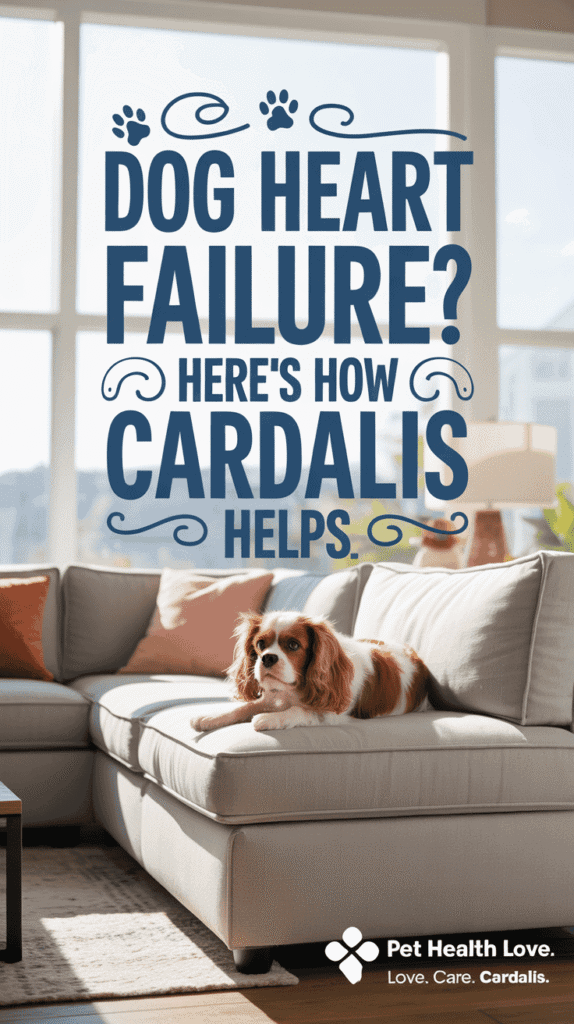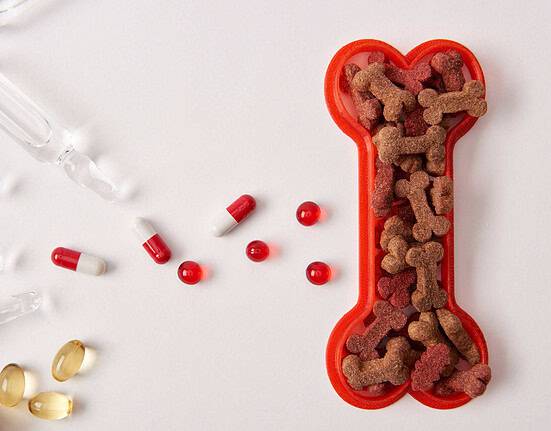Last updated on August 13th, 2025 at 09:38 pm
When your dog’s heart starts to struggle, every extra day together matters.
Cardalis—an FDA-approved medication—offers new hope for dogs living with congestive heart failure, especially those with chronic degenerative valve disease (CVD), one of the most common heart problems in older pets.
In this article, I’ll break down what Cardalis is, how it works, and what pet parents should know before starting it. Whether your dog has just been diagnosed or you’re looking for better ways to manage their heart condition, understanding this medication can help you make informed decisions about their care.
What Is Cardalis ?
Cardalis is a combination of two medicines: benazepril hydrochloride and spironolactone. These work together to help manage heart failure symptoms in dogs.
Benazepril – This medicine helps relax blood vessels, which lowers blood pressure and reduces the strain on your dog’s heart.
Spironolactone –This medicine helps prevent fluid buildup in the body, which can happen when the heart isn’t working well.
How Does Cardalis Work?
Cardalis is used for congestive heart failure caused by long-term damage to the heart valves. This new medication addresses two main problems in heart failure: high blood pressure and fluid buildup. By lowering blood pressure, benazepril makes it easier for the heart to pump blood. Spironolactone helps reduce fluid in the lungs and belly, which can make breathing easier and reduce coughing.
Together, these medicines help improve your dog’s quality of life by easing symptoms like coughing, shortness of breath, and tiredness.
Why Is Cardalis Helpful for Dogs with Heart Failure?
Heart failure is a serious condition that can make life really difficult for dogs.
When I worked in the ER, I saw countless cases where heart disease had progressed to full congestive heart failure. These dogs often came in struggling to breathe, needing to be placed in an oxygen cage while we started diuretics like Lasix to remove fluid from their lungs.
Despite my best effort, their prognosis was often poor, and their families faced heartbreaking decisions.
Traditional treatments typically involve giving several different medications—like Vetmedin and Furosemide—at different times of day to control symptoms.
Cardalis simplifies this process by combining two important medicines into one pill, making it easier for you to give and for your dog to take.
By managing the symptoms more effectively, Cardalis may help slow the progression of heart failure and improve your dog’s comfort and quality of life.
How Is Cardalis Given?
Cardalis comes in a tablet that is usually given once a day with food. The dose will depend on your dog’s weight and condition, so it’s important to follow your vet’s instructions.
Easy to Give – The tablets taste good to most dogs, making it easier to give, even if your dog is picky.
Regular Check-Ups – Your vet will need to monitor your dog’s condition regularly and may adjust the dose as needed.
Possible Side Effects of Cardalis
As with any medicine, there may be side effects when using Cardalis. These can include:
- Stomach upset like vomiting or diarrhea.
- Spironolactone can increase potassium levels, so regular blood tests to check electrolytes may be needed.
- Reduced kidney function
Additionally, Cardalis should be used with caution in dogs with liver damage as this may alter the way spironolactone is metabolized (processed) in the liver.
If your dog seems unwell or shows unusual symptoms, contact your veterinarian right away.
Who Should Consider Cardalis for Their Dog?
Cardalis is meant for dogs diagnosed with chronic degenerative valve disease (CVD) that leads to heart failure. If your dog has this condition, your vet may suggest Cardalis as part of their treatment plan.
Talk to your vet about whether Cardalis is a good choice for your dog. They can help you decide based on your dog’s specific health needs and any other medications they may be taking.
Final Note
Seeing dogs struggle with heart failure is something I’ll never get used to—but having more tools to help them is a big win. Cardalis combines two proven medications into one easy-to-give tablet, helping manage both blood pressure and fluid buildup so your dog can breathe easier and feel more comfortable.
If your pup has been diagnosed with heart failure, talk with your veterinarian about whether Cardalis could be part of their treatment plan. Even small improvements in their comfort can make the days you share together that much sweeter.
With the right care, dogs with heart failure can live longer and enjoy more time with their families.
Frequently Asked Questions (FAQs)
How should I give Cardalis to my dog?
Cardalis is usually given as a tablet once a day with food. The dosage depends on your dog’s weight and condition, so it’s important to follow your veterinarian’s instructions. The tablets are palatable, which makes them easier to give, even to picky eaters.
Are there any side effects I should watch for while my dog is on Cardalis?
Some dogs may experience mild side effects such as vomiting, diarrhea, or tiredness. Spironolactone in Cardalis can also affect potassium levels, so your vet may recommend regular blood tests. If you notice any unusual symptoms or your dog seems unwell, contact your vet immediately.
Can Cardalis be given with other medications?
Yes, Cardalis can be given with other medications, but it’s important to inform your veterinarian about all the medicines your dog is taking. Some medications may interact with Cardalis, so your vet will decide the best treatment plan to ensure your dog’s safety.
How long will my dog need to take Cardalis?
Cardalis is usually prescribed for long-term use to manage heart failure. Your dog may need to take it for the rest of their life, depending on the progression of the disease. Regular check-ups with your vet will help monitor your dog’s condition and adjust the treatment if necessary.
What should I do if I miss giving a dose of Cardalis?
If you miss a dose of Cardalis, give it as soon as you remember. However, if it’s close to the time for the next dose, skip the missed dose and continue with your regular schedule. Do not give two doses at once. If you’re unsure, contact your vet for guidance.
Is it safe to give Cardalis with other medications?
Avoid giving CARDALIS with non-steroidal anti-inflammatory drugs (NSAIDs) to dogs with kidney issues. Do not use CARDALIS in dogs with Addison’s Disease, high potassium levels, or low sodium levels.
Additionally, do not administer CARDALIS to animals with known allergies to ACE inhibitors or spironolactone.


















Leave feedback about this